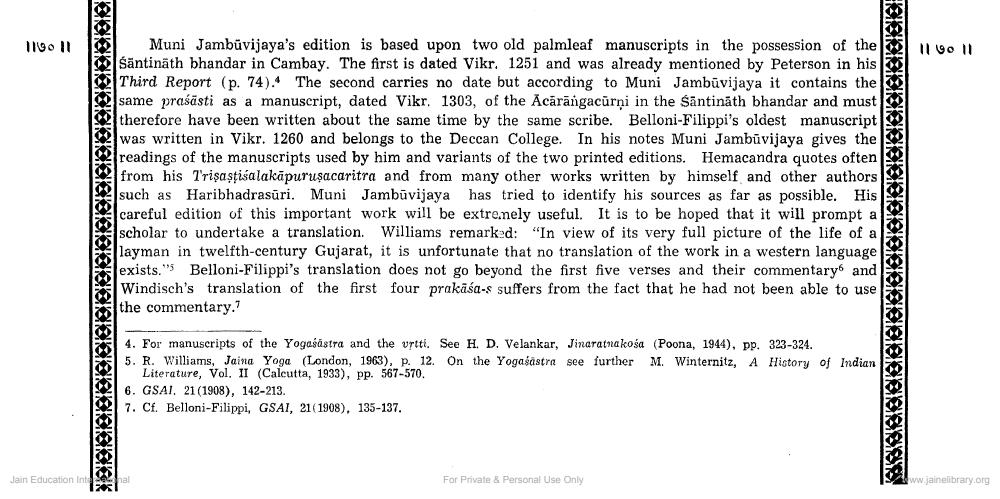________________
1190 11
Muni Jambūvijaya's edition is based upon two old palmleaf manuscripts in the possession of the Säntinath bhandar in Cambay. The first is dated Vikr. 1251 and was already mentioned by Peterson in his Third Report (p. 74). The second carries no date but according to Muni Jambūvijaya it contains the same prasasti as a manuscript, dated Vikr. 1303, of the Acarangacurni in the Santinath bhandar and must therefore have been written about the same time by the same scribe. Belloni-Filippi's oldest manuscript was written in Vikr. 1260 and belongs to the Deccan College. In his notes Muni Jambūvijaya gives the readings of the manuscripts used by him and variants of the two printed editions. Hemacandra quotes often from his Trişaştisalakāpuruşacaritra and from many other works written by himself and other authors such as Haribhadrasūri. Muni Jambūvijaya has tried to identify his sources as far as possible. His careful edition of this important work will be extremely useful. It is to be hoped that it will prompt a scholar to undertake a translation. Williams remarked: "In view of its very full picture of the life of a layman in twelfth-century Gujarat, it is unfortunate that no translation of the work in a western language exists." Belloni-Filippi's translation does not go beyond the first five verses and their commentary and Windisch's translation of the first four prakasa-s suffers from the fact that he had not been able to use the commentary.7
4. For manuscripts of the Yogasastra and the vṛtti. See H. D. Velankar, Jinaratnakosa (Poona, 1944), pp. 323-324. 5. R. Williams, Jaina Yoga (London, 1963), p. 12. On the Yogašastra see further M. Winternitz, A History of Indian Literature, Vol. II (Calcutta, 1933), pp. 567-570.
6. GSAI. 21 (1908), 142-213.
7. Cf. Belloni-Filippi, GSAI, 21(1908), 135-137.
Jain Education Inthal
For Private & Personal Use Only
00000
11 90 11
www.jainelibrary.org




